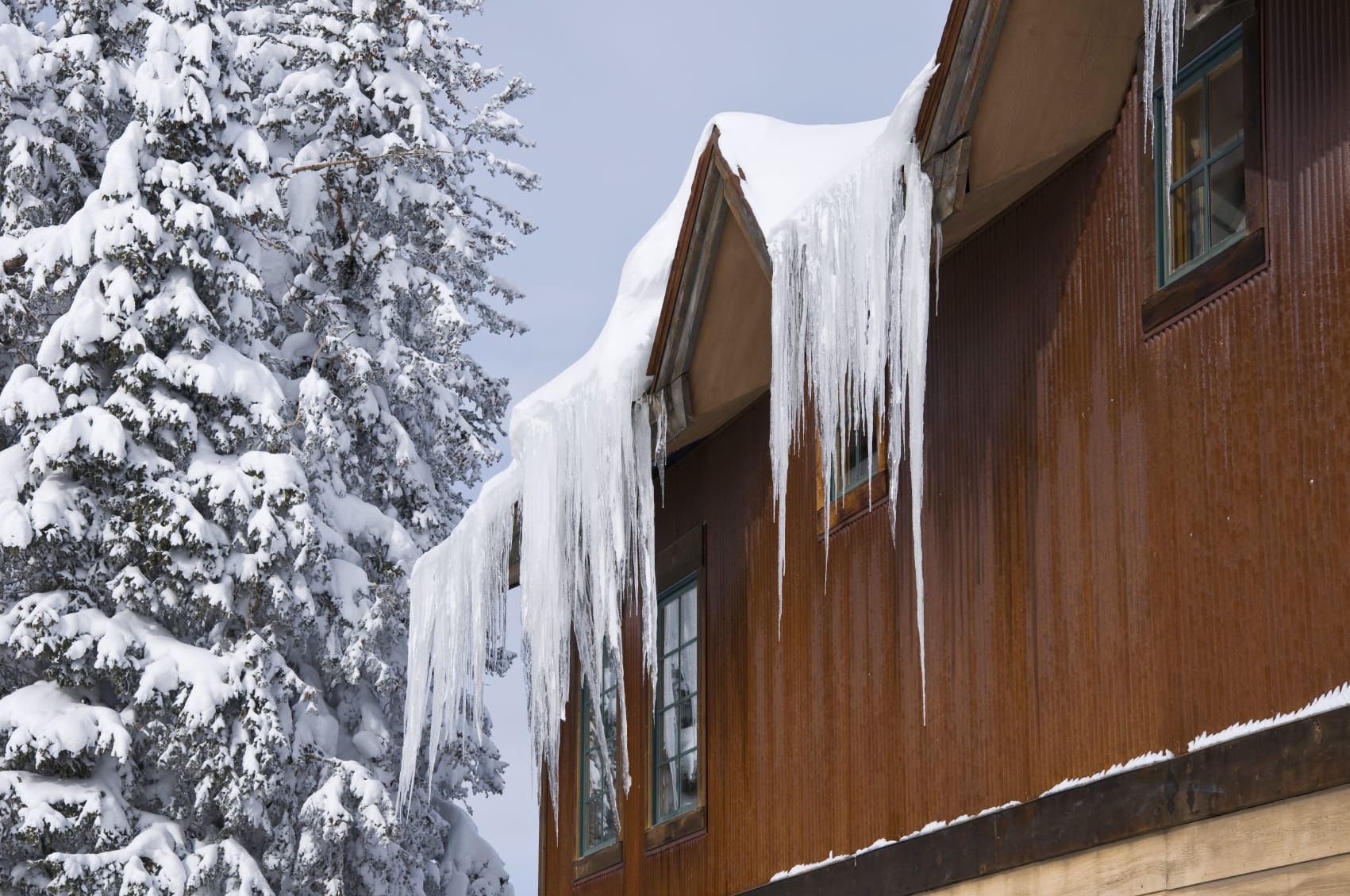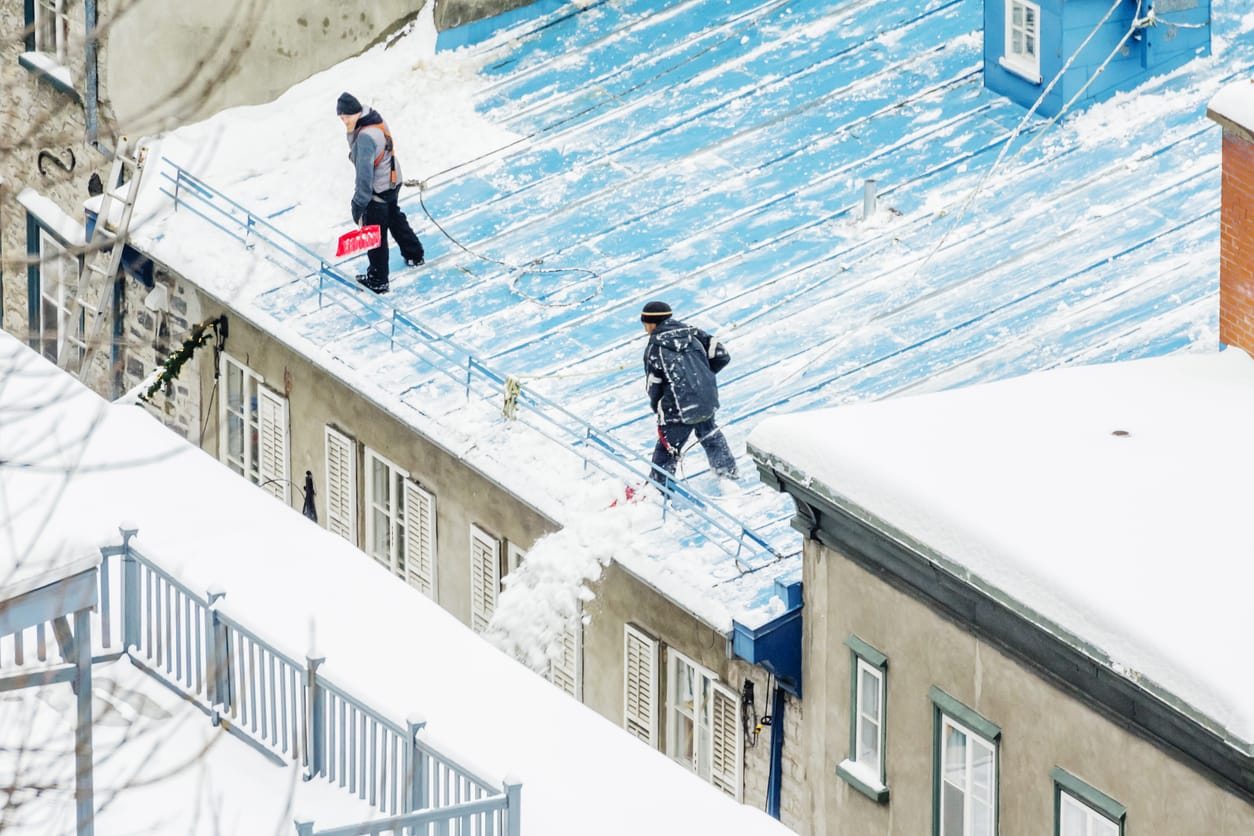How to Stay Safe During Winter Roofing Projects
Winter roofing projects can become complicated by winter weather and cold temperatures but they’re certainly not impossible.
Many folks look forward to the chill of winter weather–ice covered branches, snowy nights in front of the fireplace, and brisk temperatures can be refreshing and welcomed after a long, hot summer. But those who work on rooftops or who are needing winter roofing done may look at winter weather with a positive attitude. Winter roofing projects pose new and serious risks that need to be addressed in order to complete a roofing project safely.
Winter roofing projects are possible in the wintertime–and in fact, some need to be done during these months! But this requires those doing the work, and those overseeing projects, to keep a few considerations in mind in order to keep the winter roofing project safe and successful.
Benefits of Winter Roofing Projects
Consider briefly the benefits of completing certain roofing projects during the winter months. One benefit is the weather; while snow and ice can be problematic, sometimes cooler temperatures are a welcome change for workers who spend all day outdoors. Some workers prefer freezing temperatures to working under the sweltering summer sun all day long.
Likewise, sometimes a benefit of a winter roofing project is also a necessity. The winter weather can bring damage to your roof, such as ice dams, gutter damage, and roof leaks. If your roof is leaking, you certainly don’t want to put off leaks until spring. Winter is a time when you absolutely need your roof to be working at peak efficiency to shelter you from the elements. Water damage is an issue in and of itself–but it can also lead to the formation of mold, and drafts that let cold air in the house. Winter is sometimes as good a time as any to work on your roof.
Potential Risks
1. Slipping and Falling
Of course, winter roofing projects pose some significant and unique potential risks. One of the most obvious is the risk of slipping and falling on slick roof surfaces. Any sort of moisture on a roof can cause a roof to become slippery, and this is especially a problem when temperatures are cold enough to produce snow and ice. Further, consider that workers will likely be wearing more clothes in the winter; so, their balance may be even slightly inhibited compared to warmer temperatures.
2. Visibility
Visibility can also become a problem during the winter months. In a job where one wrong step can result in serious consequences, snow and ice can make this even more difficult. A covered roof surface hides weak spots, ice patches, painted markers, and other hazards.
3. Hypothermia
Hypothermia and frostbite are also realities of working outdoors in cold conditions. Winter roofing projects are especially prone to this hazard as workers need full mobility of the extremities that are most at risk for frostbite–the fingers and toes, most importantly.
How to Stay Safe
Luckily, it is not impossible to stay safe during winter roofing projects. It just takes a bit of thought and careful consideration of the elements and how to protect oneself from them. Consider these methods of responding to the aforementioned risks and hazards:
- Slippery surfaces and poor visibility are perhaps the most dangerous aspects of working on a roof in the winter. Consider a skylight cage or rail to help you see where you’re walking in order to prevent an unfortunate fall. Even if there’s an inch of snow on the roof, you’ll be able to see markers such as these that are elevated above the surface.
- Consider using an elevated walkway to help workers reach areas of the roof that need work without risking a misstep or fall on an unseen patch of snow or ice. This will also help you avoid having to move massive amounts of snow and ice off the roof–you’ll only need to focus on the areas that need work, because a walkway will provide dry and sturdy access.
- Use the three point rule for ladder usage when it is cold and slippery; always have at least three points of contact with the ladder at all times. Ladder rungs can be deadly when slippery or icy.
- Your own safety and that of your fellow workers is also paramount; be sure to dress properly for the weather. Dress in layers, and make sure your first layer is one that wicks sweat away from your body rather than keeping moisture in. This will help you avoid hypothermia.
- Make sure to properly protect fingers and toes; work in short spurts of time to avoid exposure to frigid temperatures for too long.
- Just because it isn’t hot outside doesn’t mean you can’t get dehydrated. Make sure you are consuming plenty of hydrating fluids before, during, and after working; this will not only benefit your health but it will also help you maintain focus, which is necessary when working in potentially dangerous situations.
Other Considerations of Winter Roofing
It is important to take into consideration a few other effects that cold weather may have on winter roofing projects. Cold weather may negatively affect certain tools, like nail guns or compressors. This can absolutely have an impact on the quality of the work done. It’s also advisable to have a third party clear any snow or ice off a roof before working–snow removal professionals have the additional knowledge, skill, and experience to create a clean and dry work space. Ideally, avoid roofing projects below freezing–and especially if there’s any substantial wind–for the sake of safety.
Conclusion
To conclude, winter roofing projects can be more complicated by winter weather and cold temperatures but they’re certainly not impossible. Safety is, of course, always paramount, but careful consideration of potential risks and hazards can alleviate most concerns. Ensure that the work space is as dry as possible. Also make sure to mark any hazards or weak spots with markers that won’t become covered by snow. An elevated platform can make access to a work space easier. Remain aware of the risks of:
- Hypothermia
- Frostbite
- Dehydration
while working in freezing temperatures. And be sure to bundle up in layers that will keep you warm and comfortable for the long haul.
During the winter months, it may be best to call your roofing contractor to assist with your roofing project. Our professionals understand winter roofing safety, and have proper equipment to successfully and safely complete the projects.



